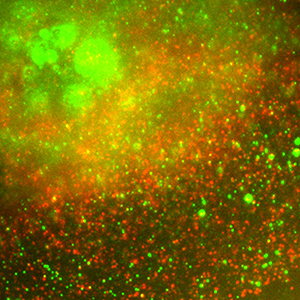Assessing the interactions between nanoparticles and biological barriers in vitro: a new challenge for microscopy techniques in nanomedicine

Accepted: 17 November 2022
HTML: 15
All claims expressed in this article are solely those of the authors and do not necessarily represent those of their affiliated organizations, or those of the publisher, the editors and the reviewers. Any product that may be evaluated in this article or claim that may be made by its manufacturer is not guaranteed or endorsed by the publisher.
Authors
Nanoconstructs intended to be used as biomedical tool must be assessed for their capability to cross biological barriers. However, studying in vivo the permeability of biological barriers to nanoparticles is quite difficult due to the many structural and functional factors involved. Therefore, the in vitro modeling of biological barriers -2D cell monocultures, 2D/3D cell co-cultures, microfluidic devices- is gaining more and more relevance in nanomedical research. Microscopy techniques play a crucial role in these studies, as they allow both visualizing nanoparticles inside the biological barrier and evaluating their impact on the barrier components. This paper provides an overview of the various microscopical approaches used to investigate nanoparticle translocation through in vitro biological barrier models. The high number of scientific articles reported highlights the great contribution of the morphological and histochemical approach to the knowledge of the dynamic interactions between nanoconstructs and the living environment.
How to Cite

This work is licensed under a Creative Commons Attribution-NonCommercial 4.0 International License.
PAGEPress has chosen to apply the Creative Commons Attribution NonCommercial 4.0 International License (CC BY-NC 4.0) to all manuscripts to be published.

 https://doi.org/10.4081/ejh.2022.3603
https://doi.org/10.4081/ejh.2022.3603






